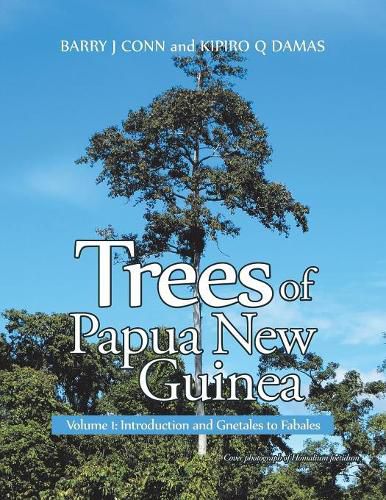Readings Newsletter
Become a Readings Member to make your shopping experience even easier.
Sign in or sign up for free!
You’re not far away from qualifying for FREE standard shipping within Australia
You’ve qualified for FREE standard shipping within Australia
The cart is loading…






This title is printed to order. This book may have been self-published. If so, we cannot guarantee the quality of the content. In the main most books will have gone through the editing process however some may not. We therefore suggest that you be aware of this before ordering this book. If in doubt check either the author or publisher’s details as we are unable to accept any returns unless they are faulty. Please contact us if you have any questions.
The island of New Guinea has a high diversity of species and a high level of endemism, containing more than 5 percent of earth’s biodiversity in just over one half of a percent of the land on the earth. New Guinea supports the largest area of mature tropical moist forest in the Asia/Pacific region. Papua New Guinea consists of the eastern part of the island of New Guinea, plus the islands of the Bismarck Archipelago, Buka, and Bougainville. There are between fifteen thousand and twenty thousand species of vascular plants in Papua New Guinea, with at least two thousand species of trees. The most important challenge for Papua New Guinea is the protection of biological diversity against the pressures resulting from global climate change, inappropriate destructive conversion of natural communities, unsustainable exploitation of forests, national economic development and societal demands, including a fair sharing of the nation’s wealth, and law and order issues.
There are very few resources available to natural resource managers, environmental scientists, nongovernment agencies, and various extractive industries, most importantly, the timber industry that will assist in the identification of major tree species within Papua New Guinea. It is hoped that the publication of these three volumes will enable those who are responsible for natural resource management to improve their knowledge of the trees in these forests so that they can fully appreciate the richness of these biologically diverse forests. The forests of Papua New Guinea need to be managed sensitively and sustainably based on advanced evidence-based knowledge.
The Trees of Papua New Guinea publication provides a comprehensive treatment of 668 species of trees (Volume 1: 257 species; Vol. 2: 246 species; Vol. 3: 165 species) that will assist in the identification of the trees of Papua New Guinea.
$9.00 standard shipping within Australia
FREE standard shipping within Australia for orders over $100.00
Express & International shipping calculated at checkout
This title is printed to order. This book may have been self-published. If so, we cannot guarantee the quality of the content. In the main most books will have gone through the editing process however some may not. We therefore suggest that you be aware of this before ordering this book. If in doubt check either the author or publisher’s details as we are unable to accept any returns unless they are faulty. Please contact us if you have any questions.
The island of New Guinea has a high diversity of species and a high level of endemism, containing more than 5 percent of earth’s biodiversity in just over one half of a percent of the land on the earth. New Guinea supports the largest area of mature tropical moist forest in the Asia/Pacific region. Papua New Guinea consists of the eastern part of the island of New Guinea, plus the islands of the Bismarck Archipelago, Buka, and Bougainville. There are between fifteen thousand and twenty thousand species of vascular plants in Papua New Guinea, with at least two thousand species of trees. The most important challenge for Papua New Guinea is the protection of biological diversity against the pressures resulting from global climate change, inappropriate destructive conversion of natural communities, unsustainable exploitation of forests, national economic development and societal demands, including a fair sharing of the nation’s wealth, and law and order issues.
There are very few resources available to natural resource managers, environmental scientists, nongovernment agencies, and various extractive industries, most importantly, the timber industry that will assist in the identification of major tree species within Papua New Guinea. It is hoped that the publication of these three volumes will enable those who are responsible for natural resource management to improve their knowledge of the trees in these forests so that they can fully appreciate the richness of these biologically diverse forests. The forests of Papua New Guinea need to be managed sensitively and sustainably based on advanced evidence-based knowledge.
The Trees of Papua New Guinea publication provides a comprehensive treatment of 668 species of trees (Volume 1: 257 species; Vol. 2: 246 species; Vol. 3: 165 species) that will assist in the identification of the trees of Papua New Guinea.